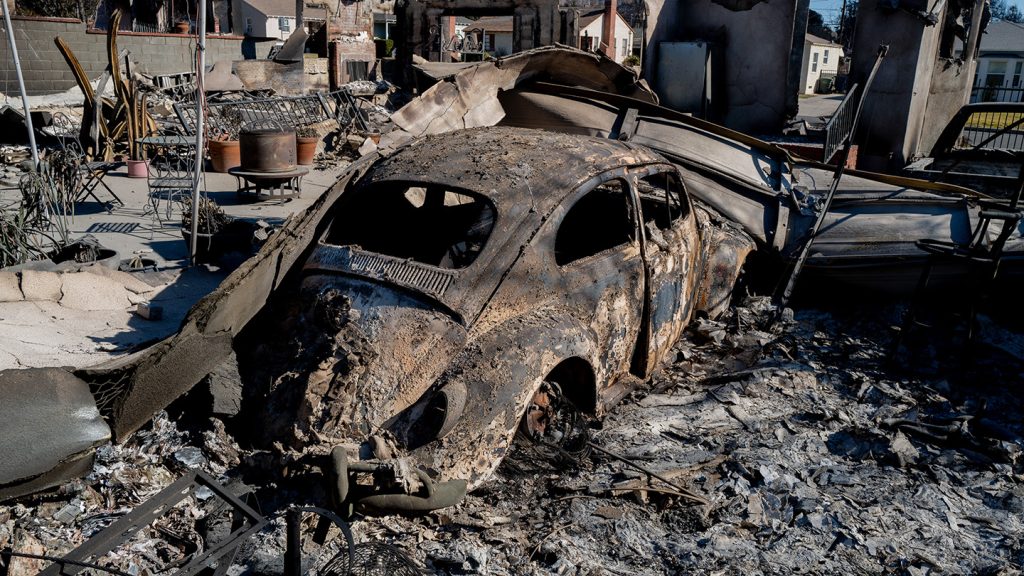The aftermath of wildfires presents a more insidious danger than the fires themselves, releasing a cocktail of toxic chemicals into the environment. These hazards, emanating from the burned remnants of homes, vehicles, infrastructure, and even the fire retardants used to combat the flames, pose significant short-term and potentially long-term health risks to residents in and around the affected areas. The misconception that danger dissipates with the extinguishing of flames needs urgent correction.
The toxic brew of pollutants released varies depending on the fuel source. Burning vegetation produces fine particles and chemicals like ozone, sulfur dioxide, and polycyclic aromatic hydrocarbons. Urban wildfires introduce a new dimension of risk with the combustion of buildings and vehicles, releasing heavy metals like lead and copper, asbestos from older structures, and noxious chemicals and metals from burning plastics and electronics. These substances contaminate the air, soil, and water, as demonstrated by the high levels of arsenic, lead, antimony, copper, and cobalt found in the ash following the Lahaina, Hawaii, fire.
While the primary component of fire retardants, ammonium phosphate, is generally considered safe, concerns arise from the presence of heavy metals like chromium and cadmium in some formulations. Exposure to chromium six can cause skin and respiratory irritation and potentially increase cancer risk, while cadmium exposure can lead to flu-like symptoms, lung damage, and kidney, bone, and lung diseases with prolonged exposure. While newer formulations are being used with reduced toxicity to aquatic life, research on their heavy metal content is ongoing.
Returning residents face immediate risks from resuspended ash, soot, and pollutants, especially those near burn zones. Protective measures such as wearing heavy boots, gloves, long pants, long-sleeved shirts, and removing contaminated clothing are essential. N-95 masks offer some protection against particles, but P100 respirators with organic vapor filters provide better protection against gases and residual fire retardant. Soil testing is recommended before growing edible crops in areas where fire retardant or heavy metal-laden ash has settled. Washing skin, pets, and vegetation that has come into contact with fire retardant is also advised.
Water contamination poses another serious threat. Burning plastics and other materials can introduce chemicals into drinking water sources, rendering them unsafe. Low water pressure and broken pipes exacerbate the problem by allowing microbial contamination. Volatile organic compounds (VOCs), such as benzene, can leach from plastic pipes and gaskets, posing long-term health risks. Following official water advisories, and refraining from drinking, bathing, or using contaminated water for other purposes is crucial. Boiling water is ineffective in removing these chemicals and can actually release more VOCs into the air, leading to nausea, dizziness, and other symptoms. Testing water after authorities lift advisories is essential to ensuring safety.
Wildfire smoke also significantly impacts indoor air quality. Homes in or near burn zones can become uninhabitable due to toxic chemical buildup, often requiring complete gutting and rebuilding. Homes act as sponges, absorbing smoke compounds that linger for weeks. Experiences from the Marshall Fire in Colorado highlight this issue, where residents reported ash infiltrating homes through various openings, leading to health problems like headaches, strange tastes in the mouth, and respiratory irritation. VOC levels inside some homes rivaled those of heavily polluted cities in the past, persisting for weeks after the fire.
The persistence of VOCs poses a significant challenge, as they adhere to various surfaces and are slowly released over time. While opening windows and using air cleaners provide temporary relief, thorough cleaning is the most effective method for removing these compounds. This includes washing all surfaces, including walls and ceilings, vacuuming, and removing soft furnishings. Wearing masks or respirators during cleaning is vital to prevent dust and ash inhalation. Avoid using chemical cleaners like bleach, ozone, and peroxide, as they can react with VOCs, creating even more toxic substances. The long-term health consequences of wildfire exposure remain an area of ongoing research, underscoring the need for comprehensive mitigation strategies and long-term monitoring.


